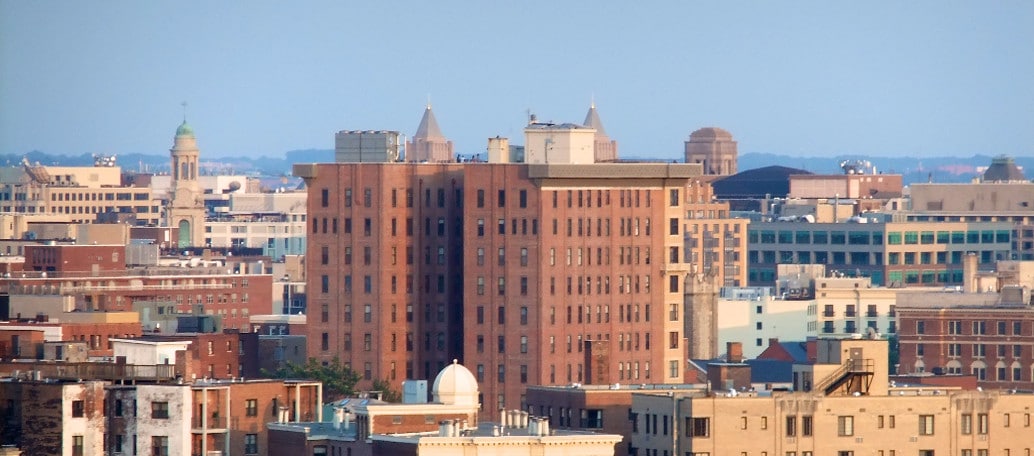By all accounts, Washington D.C. is not the easiest place to install a PV system. The nation’s capitol is a compact urban space, with 59% of homes occupied by renters – a high portion for a U.S. city. Additionally, PEPCO has shown itself to be one of the worst utilities in the nation for prompt interconnections.
At the end of 2016 just under 20 MW of distributed solar had been installed in the city, falling far short of the district’s goal of 70 MW. And as a new report shows, even 70 MW is a tiny portion of what is technically possible.
Distributed Solar in the District of Columbia takes a square look at the barriers to installing solar in the capital, and what it would take to address those challenges. The report by the Office of the People’s Counsel for D.C. (OPC) and consultancy Synapse found that there is much work to do to reach the district’s goal to have 5% of its electricity come from local solar.
“Some people have said that’s a crazy number,” says Anya Schoolman, executive director of the Community Power Network. “One, it’s not crazy; two, it’s doable; and three it’ll help everybody. It’ll be good for the whole city.”
The report also put some capacity numbers on what is possible. The report gives three cases, and even its “conservative” case found the potential for 940 MW of rooftop solar, just over half of which is on commercial and industrial buildings. It’s reference case found that more like 1.7 GW was available, and an “optimistic” scenarios envisions space for 2.5 GW.
Of all the barriers listed in the report, the long-term economic value of installing solar was not among them. Thanks in part to a strong policy framework including net metering and the availability of solar renewable energy credits, the report finds that the payback time for a typical residential system is only five years.
However, the lack of owner-occupied single family housing, which represents only 28% of the city’s residential stock, is. The multi-family units which are more common represent bigger barriers to deployment, even when those living in these units own them.
“Decisions to install solar panels become more complex where multiple owners share roof space, and solar may have to compete with alternative rooftop uses on such buildings, such as swimming pools, building HVAC systems, and shared entertainment areas,” notes the report.
And despite the city’s Solar for All program, barriers still exist for the city’s many low-income residents.
The report makes multiple suggestions to address both installing solar on rental properties and low-income solar, including expanding the city’s Affordable Solar Program. The report suggest key component to address both low-income populations and renters may be providing access to community solar arrays, which could include increasing net metering credits.
Synapse and OPC found that the relatively new nature of community solar and engineering challenges were problems and recommended a host of actions to address this, including expanding incentives, partnering with third-party community solar developers, and even allowing PEPCO to offer community solar “if the market does not”.
PEPCO itself remains a problem. The report cites a recent MDV-SEIA study which found it to be 33rd out of 34 utilities in terms of the time required to interconnect small solar. The report suggests that regulators could use both carrots and sticks in terms of financial penalties and incentives to get PEPCO to achieve solar targets, including speeding interconnection timelines.
This content is protected by copyright and may not be reused. If you want to cooperate with us and would like to reuse some of our content, please contact: editors@pv-magazine.com.









By submitting this form you agree to pv magazine using your data for the purposes of publishing your comment.
Your personal data will only be disclosed or otherwise transmitted to third parties for the purposes of spam filtering or if this is necessary for technical maintenance of the website. Any other transfer to third parties will not take place unless this is justified on the basis of applicable data protection regulations or if pv magazine is legally obliged to do so.
You may revoke this consent at any time with effect for the future, in which case your personal data will be deleted immediately. Otherwise, your data will be deleted if pv magazine has processed your request or the purpose of data storage is fulfilled.
Further information on data privacy can be found in our Data Protection Policy.